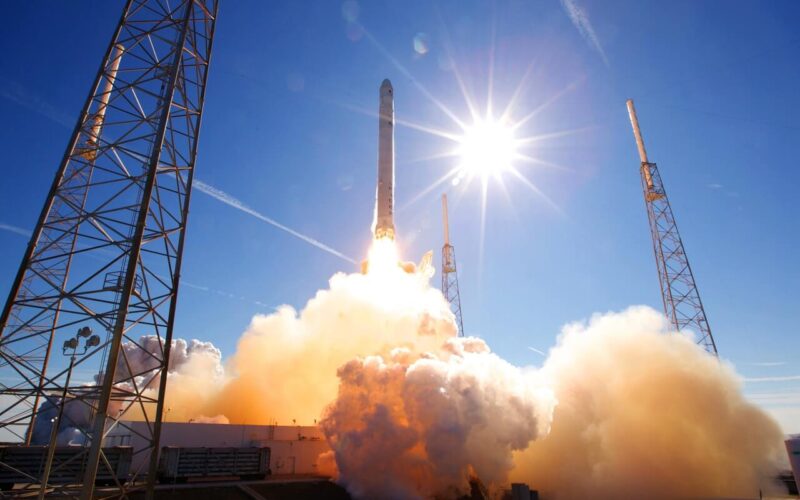SpaceX’s Falcon 9 and Falcon Heavy have fallen under scrutiny by the Pentagon, which has initiated a review of the certification of the launch vehicles by the U.S. Air Force. Elon Musk’s company had recently celebrated entering the military space launch market with its first national security space mission completed in December 2018.
According to a memo released by the U.S. Department of Defense (DoD), the Pentagon is set to begin evaluating the U.S. Air Force’s (USAF) certification of SpaceX launch vehicles this month in order to determine whether the USAF complied with certain guidelines when certifying the SpaceX Falcon 9 and Falcon Heavy.
“Our objective is to determine whether the U.S. Air Force complied with the Launch Services New Entrant Certification Guide when certifying the launch system design for the Evolved Expendable Launch Vehicle-class SpaceX Falcon 9 and Falcon Heavy launch vehicles,” the U.S. DoD Deputy Inspector General Michael J. Roark said in the memo, dated February 11, 2019.
According to the document, the evaluation will be performed at the Space and Missile Systems Center, a unit of USAF Space Command, headquartered at Los Angeles Air Force Base in El Segundo, California. Additional locations may be announced during the evaluation, the memo states. No further details regarding the evaluation process have yet been released.
The memo comes on the same day as the Defense Intelligence Agency (DIA) presented its report on space security, stressing the impact of space on the military and the need for the U.S. to “maintain its progress in this critical domain”.
“Space is fundamental to U.S. prosperity,” a senior DIA said in the report. “The United States harnesses the benefits of space for communications, financial transactions, public safety, weather, agriculture, navigation and more. Additionally, there is a wave of exciting commercial technologies and investments in space that are expanding the potential opportunities, the benefits we can all enjoy.”
Military space launches and broadband from space: market opportunities
Elon Musk’s space transportation company has recently been making inroads in the military space launch market, dominated by Lockheed Martin and Boeing. On December 23, 2018, the Falcon 9 rocket successfully launched a U.S. military navigation satellite into space from the Kennedy Space Center in Cape Canaveral, Florida.
It was SpaceX’s 21st and final launch for the year, but it also marked the company’s first U.S. national security space mission, Reuters reported at the time. The launch sent the GPS III satellite, to join the constellation of 31 operational GPS satellites built by Lockheed Martin for the USAF GPS III program, ABS-CBN pointed out.
Liftoff! pic.twitter.com/pi78HVFs6J
— SpaceX (@SpaceX) December 23, 2018
According to the Reuters report, in 2014, SpaceX sued the USAF over the military’s award of a multibillion-dollar contract for 36 rocket launches to United Launch Alliance (ULA), a joint venture between Boeing and Lockheed. SpaceX later dropped the lawsuit when the USAF agreed to open up competition and allow the company to take on military payloads. In 2016, it won an $83 million USAF contract to launch the GPS III satellite.
Also in December of last year, SpaceX was awarded a $28.7 million contract by the USAF to study, develop and test possible military communications applications of its proposed Starlink internet satellite constellation. The Starlink internet connectivity tests involve a set of antennas, known as conformal antenna arrays, and would be performed on the ground as well as on moving aircraft.
“Experimentation will include connectivity demonstrations to Air Force ground sites and aircraft for experimental purposes. For the proposed Phase 2, the awardee proposes to perform experiments [with] early versions of a commercial space-to-space data relay service and mobile connectivity directly from space to aircraft,” DoD stated announcing the contract on its website.
SpaceX will receive $19.1 million of the total $28.7 million sum from the DoD in fiscal year 2019 for the program. The research, development and test work is to be carried out at the company’s headquarters in Hawthorne, California, and is expected to be completed by mid-2021.
Seeing it as a crucial market for growth, the space transportation company had already launched two prototype Starlink satellites, named Tintin A and B, into orbit for testing earlier in 2018. Around the same time, Aviation Week reported that the U.S. Air Force’s Research Laboratory (AFRL) is planning to contract at least one commercial internet provider for a set of antennas that can be mounted onto USAF test aircraft. The aircraft, such as F-16s, would be flown directly under the associated satellites and establish a communications path.
Prior to securing funding from the USAF, in November 2018, the U.S. Federal Communications Commission (FCC), which oversees satellites in orbit, approved SpaceX to launch 4,425 of its communications satellites into low Earth orbit (LEO) and 7,518 more in very low Earth orbit (VLEO), for a total of nearly 12,000 satellites.
“In this Memorandum Opinion, Order and Authorization, we grant the application of Space Exploration Holdings, LLC (SpaceX) to construct, deploy and operate a proposed nongeostationary orbit (NGSO) satellite system using frequencies in the V-band… SpaceX’s V-band operations will augment the capabilities of SpaceX’s Ku-band and Ka-band NGSO system that was recently authorized,” the FCC stated in a memo, dated November 19, 2018.
SpaceX said it plans to begin an operational Starlink satellite launch campaign in 2019, as SpaceX Testimony to U.S. Senate indicates. In fact, CEO Elon Musk has recently pushed for the launch to come as early as June 2019. The remaining satellites in the constellation are to be launched through 2024, when the system will reach full capacity. The company also plans to launch another round of improved (Gen 2) satellite prototypes early in 2019, Reuters reported. SpaceX intends to launch the system using its Falcon 9 rocket.

